K-1
K-1 is a martial arts organisation and martial arts brand established in 1993, well-known worldwide mainly for its heavyweight division fights.[1] In January 2012, K-1 Global Holdings Limited, a company registered in Hong Kong, acquired the rights to K-1, and is the current organizer of K-1 events worldwide.
 | |
| Type | Private |
|---|---|
| Industry | Martial-arts entertainment planning and promotion |
| Founded | 1993 |
| Founders | Kazuyoshi Ishii |
| Headquarters | |
Key people | Amanda Yang, Director Management & Administration
Alin Hălmăgean, Director Operations |
| Owner | K-1 Global Holdings Limited |
| Website | K-1 Global K-1 Japan |
Name
The letter K in K-1 is officially designated as a representation of words karate, kickboxing and kung fu. Nevertheless, some reports suggest that it represents the initial K found in competing disciplines such as karate, kickboxing, kung fu, kempo, kakutougi (the generic Japanese term for "combat sports"), and [tae] kwon do.[2] Yet another theory claims that the K simply comes from kakutougi and the "1" component pertains to the single weight division (in earlier competition) and the champion's unique position.[3] Nevertheless, the promotion held several tournaments under K-2 and K-3 banners from 1993 to 1995.
History
K-1's predecessor Seidokaikan Karate was formed in 1980 by Kazuyoshi Ishii, a former Kyokushin karate practitioner who had formed his own organization to help promote the best stand-up martial artists.[4] Seidokaikan arranged several successful challenge events against other martial arts organizations, originally using rules based on the Kyokushin Knockdown karate rules, but gradually adapting and changing closer to kickboxing rules. In 1993, Mr. Ishii founded the K-1 organization exclusively as a kickboxing organization, closely cooperating with, but independent from Seidokaikan.[3]
Financial problems
Starting in 2010, multiple stories began to surface regarding the financial troubles of K-1 and their parent company FEG.[5] Simon Rutz, the owner of the Dutch-based kickboxing promotion It's Showtime, claimed in January 2011 that some fighters from It's Showtime had not been paid for fights in K-1.[6]
In early 2011, FEG publicly announced that they were facing financial problems and that the organization would take some months off to restructure. Many fighters and managers spoke out against FEG due to unpaid fight purses and objections to the direction that its owner was taking K-1. It appeared that financial problems were severe, and that FEG could potentially lose ownership of K-1.[7]
The entire K-1 brand, along with most of its trademarks, with the exception of, 'K-1 Koshien', 'K-1 MAX' and 'Dream', were sold to Japanese real estate firm, Barbizon Corporation Limited, on July 28, 2011.[8]
On February 1, 2012 EMCOM Entertainment Inc. purchased K-1 from Barbizon.[9]
K-1 Global
In March 2012, It's Showtime announced that EMCOM Entertainment established a new company K-1 Global Holdings Ltd. in Hong Kong. K-1 Global Holdings, Ltd., became the new official owner of the K-1 brand. K-1 Global's agreement with promotion required that certain fighters signed under It's Showtime appear in upcoming K-1 Global events.[10]
A number of events were already planned and scheduled for the 2012 calendar before new K-1 ownership took complete control of the company. It's Showtime was the promoter of the first event presented by K-1 Global Holdings Ltd., the K-1 World MAX Final 16. It took place on May 27, 2012 at the Palacio Vistalegre in Madrid, Spain.
After the event, controversy and rumors circulated over the fact that once again, fighters were not paid for their performances. Problems were compounded due to unpaid financial obligations of FEG, and the complete transfer of ownership of the K-1 name was not yet complete. As a result, the K-1 World Grand Prix scheduled for 2012 would be cancelled if these issues were not resolved.[11]
Ultimately, K-1 Global Holdings, Ltd. was blamed for the failure of an event they did not promote. They were also accused of not paying fighters when in fact, the promoter and FEG shared responsibilities in ensuring fighters were paid. The Chairman of the new K-1 resolved the matter by paying fighters what was owed and including a 50% bonus.[12]
It was announced in June 2012 that It's Showtime was purchased by Glory Sports International, eventually to be merged in their new promotion GLORY.[13]
On August 10, 2012 K-1's co-promotion agreement with Romanian-based kickboxing promotion SUPERKOMBAT was announced.[14] Eventually it was ended. Early 2013 SK president Eduard Irimia stated that its company will be independent in 2013 but will still continue to have cooperation with any interested promotion including K-1 by offering fighters.[15]
List of K-1 events
In the past every year there were dozens of other K-1 qualifying tournaments and preliminaries held around the world.
K-1 has held events in many countries around the world.
The following is a list of countries that K-1 has held events in chronological order:
 Japan (1993–2012, 2014-2020)
Japan (1993–2012, 2014-2020) Netherlands (1994, 2001–2003, 2006–2010)
Netherlands (1994, 2001–2003, 2006–2010) France (1995, 2002–2008, 2010)
France (1995, 2002–2008, 2010) Switzerland (1995–2000, 2003, 2017)
Switzerland (1995–2000, 2003, 2017) United States (1998, 2000–2008, 2012)
United States (1998, 2000–2008, 2012).svg.png.webp) Australia (2000–2005, 2010)
Australia (2000–2005, 2010) England (2000, 2002–2004, 2006–2007, 2013)
England (2000, 2002–2004, 2006–2007, 2013) Italy (2000–2008)
Italy (2000–2008) Germany (2000–2008)
Germany (2000–2008)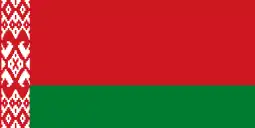 Belarus (2000, 2010)
Belarus (2000, 2010) Croatia (2000, 2002, 2007, 2009–2010, 2013)
Croatia (2000, 2002, 2007, 2009–2010, 2013) South Africa (2000–2002, 2006)
South Africa (2000–2002, 2006)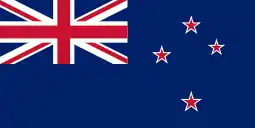 New Zealand (2000–2006)
New Zealand (2000–2006)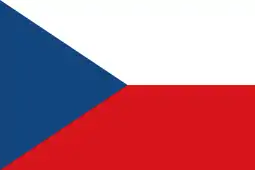 Czech Republic (2000–2001, 2006–2009)
Czech Republic (2000–2001, 2006–2009) Denmark (2001)
Denmark (2001)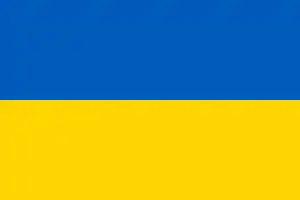 Ukraine (2001–2002, 2006, 2010)
Ukraine (2001–2002, 2006, 2010) Spain (2002–2004, 2005–2006, 2012–2014)
Spain (2002–2004, 2005–2006, 2012–2014) Brazil (2002–2006, 2013)
Brazil (2002–2006, 2013) Sweden (2003–2010)
Sweden (2003–2010) Russia (2003, 2006, 2010)
Russia (2003, 2006, 2010)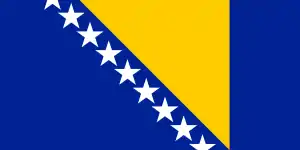 Bosnia and Herzegovina (2003–2004, 2009, 2016)
Bosnia and Herzegovina (2003–2004, 2009, 2016) Scotland (2004)
Scotland (2004) Portugal (2004, 2006, 2013)
Portugal (2004, 2006, 2013) Poland (2004, 2007–2010)
Poland (2004, 2007–2010) South Korea (2004–2010, 2013)
South Korea (2004–2010, 2013) Slovenia (2005–2006, 2008)
Slovenia (2005–2006, 2008) Hungary (2005–2010)
Hungary (2005–2010)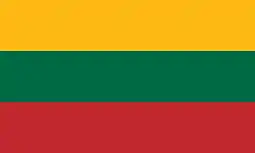 Lithuania (2006–2007, 2010, 2013)
Lithuania (2006–2007, 2010, 2013) Latvia (2006–2008)
Latvia (2006–2008) Turkey (2007, 2010)
Turkey (2007, 2010).svg.png.webp) Belgium (2007)
Belgium (2007) Estonia (2007, 2009)
Estonia (2007, 2009) Romania (2007, 2009–2010)
Romania (2007, 2009–2010)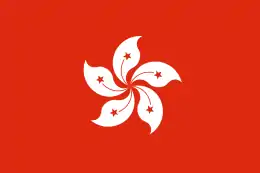 Hong Kong (2007)
Hong Kong (2007)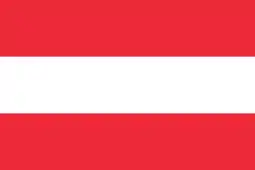 Austria (2008)
Austria (2008)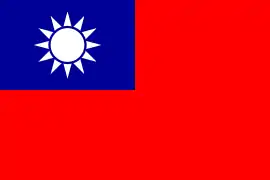 Taiwan (2008)
Taiwan (2008)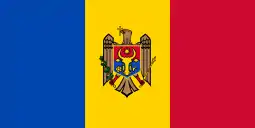 Moldova (2009–2010, 2013)
Moldova (2009–2010, 2013) China (2013-2015)
China (2013-2015)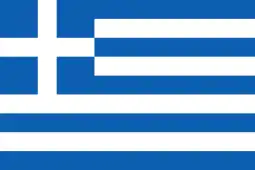 Greece (2012)
Greece (2012).svg.png.webp) Canada (2013)
Canada (2013) Ireland (2013)
Ireland (2013)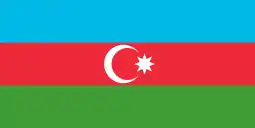 Azerbaijan (2014)
Azerbaijan (2014)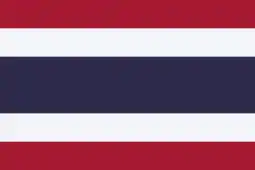 Thailand (2014)
Thailand (2014)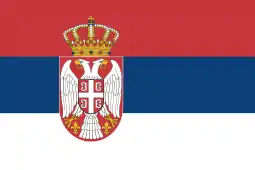 Serbia (2016)
Serbia (2016)
Tournament format
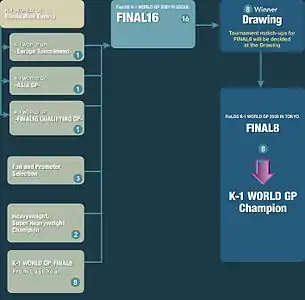
K-1 Grand Prix
Original K-1 Grand Prix was a single event tournament held in Japan where competitors participated on invitation. By 1998, K-1 introduced the K-1 World Grand Prix format composed of K-1 Regional Elimination Tournaments (theoretically amounting to six), which qualify fighters for the K-1 World Grand Prix Final, along with licensed K-1 Fighting Network events designed to hold national preliminaries for regional qualification. However, given the fact that K-1's popularity differs greatly among six K-1 regions, which may limit the number of actual elimination tournaments or change locations. For example, K-1 attempted to gain popularity in the United States by holding two GPs, however only a few Americans have ever qualified for the Finals. In 2006 one of the American GPs was relocated to Auckland. Additionally the K-1 Paris GP lost its qualifying right in favor of Amsterdam. Eventually Amsterdam lost it in favor of Łódź, and then Łódź in favor of Bucharest.
K-1 World Grand Prix Final Eliminator ("Final 16") is an event where 16 participants compete for the final eight spots in the Final ("Final 8"). Eight participants from the Final Eliminator meet at the K-1 World Grand Prix Final. Lesser elements in the tournament format have been significantly modified in years. The final was held at Tokyo Dome from 1997 to 2006. The 2012 final took place for the first time in history outside Japan, in Zagreb, Croatia.
K-1 World MAX and other
By 2002, K-1 started the K-1 World MAX ("Middleweight Artistic Xtreme") tournament for 70 kg (154 lb) Middleweight division, following a similar scheme to K-1 World Grand Prix (with theoretically four regional eliminators). In 2007, K-1 introduced two new title belts separate from K-1 World GP Champions, Super Heavyweight World Title for fighters over 100 kg/220 lbs and Heavyweight World Title for fighters under 100 kg/156–220 lbs.
Broadcast
K-1 events have been shown on the Tokyo Broadcasting System and Fuji TV.[16] After the 'Katougi boom', and the loss of a mainstream network deal, AbemaTV became K-1's primary broadcaster.[17]
Internationally, K-1 has been seen on XTM in South Korea , Combate and SporTV in Brazil , HDNet Fights[18] in the United States, and on Eurosport in Europe.
K-1 Japan Group also operates a YouTube channel where fights, press conferences, and general media is uploaded.[19]
List of K-1 champions
Current champions
| Division | Champion | Since | Title defences |
|---|---|---|---|
| Heavyweight (-100 kg) | 2018 | 1 | |
| Cruiserweight (-90 kg) | 2020 | 0 | |
| Super Welterweight (-70 kg) | 2020 | 0 | |
| Welterweight (-67.5 kg) | |||
| Super Lightweight (-65 kg) | 2020 | 0 | |
| Lightweight (-62.5 kg) | 2020 | 0 | |
| Super Featherweight (-60 kg) | 2017 | 1 | |
| Featherweight (-57.5 kg) | 2019 | 0 | |
| Super Bantamweight (-55 kg) | |||
| Flyweight (-52 kg) | 2019 | 0 | |
References
- "Black Belt". Books.google.co.uk. August 2002. Retrieved 2016-02-20.
- Tashiro, H., & Tyrangiel, J. (2001): Turning the martial arts into mondo mayhem TIME (September 3, 2001). Retrieved on March 4, 2010.
- Maylam, J. (2001): K-1 hits the spot: Ultimate fighters pack a punch The Japan Times (October 21, 2001). Retrieved on March 4, 2010.
- "K-1 | FIGHT! Magazine – Archives". fightmagazine.com. Retrieved 2014-04-06.
- "The Showtime May Arena event would possibly be delayed, due to K-1's financial problems" Archived 2011-01-24 at the Wayback Machine, January 21, 2011, Sports Navi – Yahoo! Japan (in Japanese)
- "What is happening with K-1!? It's Showtime owner Rutz talks about the rumor (1/2)" Archived 2012-09-30 at the Wayback Machine, January 21, 2011, Sports Navi – Yahoo! Japan (in Japanese)
- "K-1 could be purchased after a financial problem!? Like Pride?", January 23, 2011, Livedoor Sports (in Japanese)
- "K-1 Sold to Japanese Real Estate Firm Barbizon", July 28, 2011, MMAFighting
- K-1 announces agreement with SuperKombat, February 1, 2012, Liver Kick
- It's Showtime Closes Deal with the New K-1 Organization, March 6, 2012, It's Showtime
- Simon Rutz: "K-1 World Grand Prix Canceled, FEG 'Technically Bankrupt", October 17, 2011, Mmafighting.com
- "Daniel Ghita gives us insight into K-1's future and a fragmented kickboxing world". Liverkick.com. Archived from the original on 2016-01-07. Retrieved 2015-10-29.
- Archived September 6, 2012, at the Wayback Machine
- K-1 announces agreement with SuperKombat, August 10, 2012, Liverkick.com
- Liverkick's Exclusive Interview with Superkombat President Eduard Irimia, February 19, 2013, Liverkick.com
- "Bad Left Hook, Global Boxing News and Commentary". Headkicklegend.com. Retrieved 2014-04-06.
- https://abema.tv/timetable
- Archived October 29, 2009, at the Wayback Machine
- https://www.youtube.com/user/k1WorldLeague